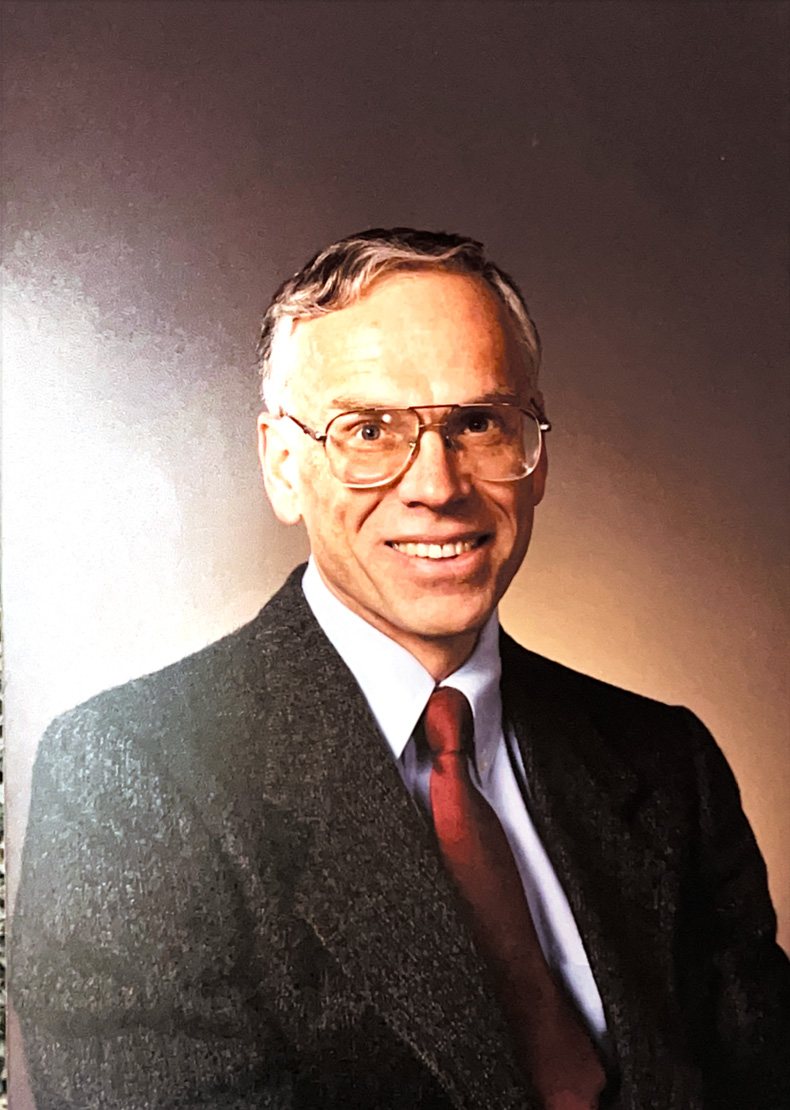
One of the important administrative innovations of Peter Armentrout’s tour as Department Chair was the creation of monthly “brown bag lunches” attended by the full department faculty. Customarily, two faculty members are deputized by the Chair to talk for about 25 minutes each about their current research. No slides, overheads, handouts or movies are allowed. The speaker may write on the blackboard (or white board) in the course of the talk, but questions from the audience and answers from the speaker get the main emphasis of each performance. Faculty members bring their own sack lunch and drink soda water and eat cookies provided by the Chair.
This sort of preview of “amazing scientific discoveries” can be the means of encouraging publication in peer reviewed journals that head off “cold fusion” type papers before they reach the popular press.
Providing adequate space for laboratory research was a special concern in 2003. What was probably unforeseeable was how much the space needs would change as the composition of the faculty would change and the physical size of NMR high-field research instrumentation would also decrease. In spring 2003, Dave Grant and a small army of NMR research coworkers were using (then) state-of-the-art spectrometers with wide magnetic fields. The design of the new David M. Grant NMR facility with huge open bays for 2 new NMR spectrometers that would avoid overlap of magnetic fields moved forward.
Since the mid-1980s, Professor Arthur J. Epstein at Ohio State University and Joel Miller at Utah had been developing plastic magnets that conduct electricity. In 2003, a new kind of electronics called spintronics based on a plastic called vanadium tetracyanoethanide, or TCNE, seemed very promising. Spintronics can let computers store and transfer twice as much data per electron as in a traditional semiconductor such as silicon or gallium arsenide. A bonus is that once a magnetic field pushes an electron into a direction of spin, it keeps spinning the same way until another magnetic field causes the spin to change. This property facilitates quick access of magnetically stored information during computer operation even if electrical power to the computer is switched off between uses. Thus data can be stored permanently and is available instantly at any time. Perhaps most remarkably, plastic TCNE works all this magic at temperatures as high as 100°C.
As we embark now on a consideration of what transpired in the Utah Chemistry Department in the year 2004 it may be helpful to pause first to consider briefly the dramatic change in the flavor of what was happening in the classrooms and laboratories over the half century between 1954 and 2004. In 1954, Bill Burke and his faculty of a dozen profs were teaching in what is now the Widtsoe Building on Presidents Circle and in several World War II era refurbished wooden barracks buildings. There was no refrigerated air conditioning and freshmen laboratory students sweltered in a big top floor lab with no fume hoods. All the lectures were delivered to students in poorly illuminated lecture halls with the instructors writing on blackboards. The saving grace was that the lecturers (Lloyd Malm, Jim Sugihara, Jim Horton, Henry Eyring, and Austin Warhaftig, to name a representative few) were bright minds with great enthusiasm for their subject matter. Chemical research was being carried out largely by talented graduate students. The eight Ph.D.s who graduated in 1954 included Cal Giddings who went on to become the international star of his generation of chromatographers. Cal’s conception and execution of several “field flow fractionation techniques” continue to find practical applications among practical chromatographers worldwide. Returning our focus to chemistry at Utah in 1954, calculations were done by physical chemistry graduate students and postdocs on mechanical calculations and slide rules. Biochemical research was being carried out mostly in the Medical School. Only one woman, Marilyn Grace Alder, had graduated in Chemistry with a Ph.D. degree (in 1951).
In 2004, Peter Armentrout was beginning his second three-year term as Department Chair. He had a faculty of about thirty professors housed in a complex of modern, well-ventilated classrooms and laboratories called the Henry Eyring Building. Striking changes at the fifty-year mark included many more women students at every level in 2004, and four truly gifted women on the tenured or tenure track faculty. Back in 1954, the modest reputation of the Department rested largely on the research achievements of Henry Eyring and the bright young physical chemistry Ph.D.s (Ransom Parlin, Bruno Zwolinski, Rufus Lumry, Bill Cagle) who had gathered around him. In striking contrast, in 2004, the research reputation of the Department rested on the achievements of a balanced team of organic, inorganic, analytical, and physical chemists. In 2014, the balance was further improved by the research achievements of faculty members who are now focused on biological chemistry problems.
